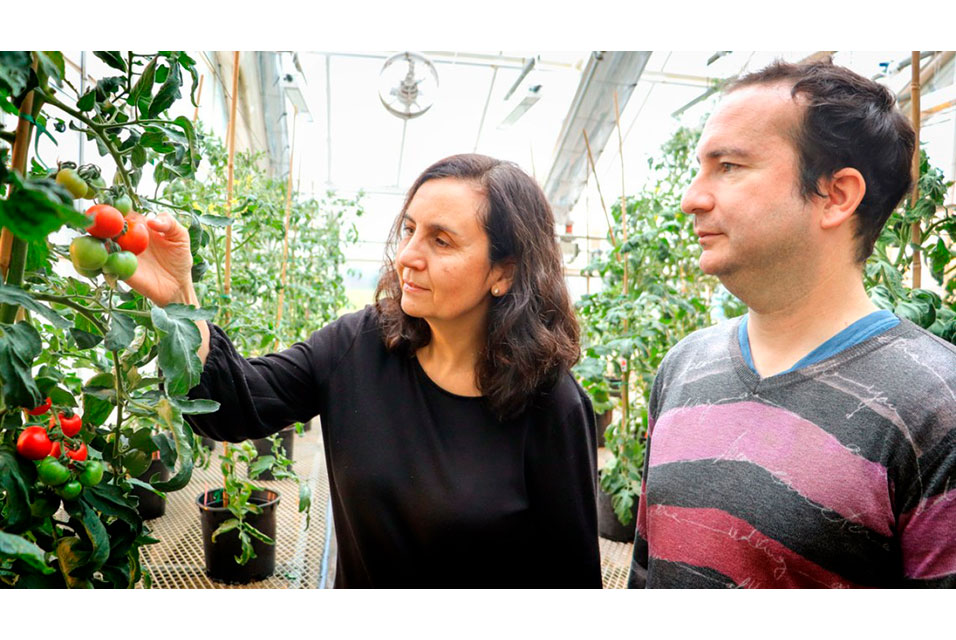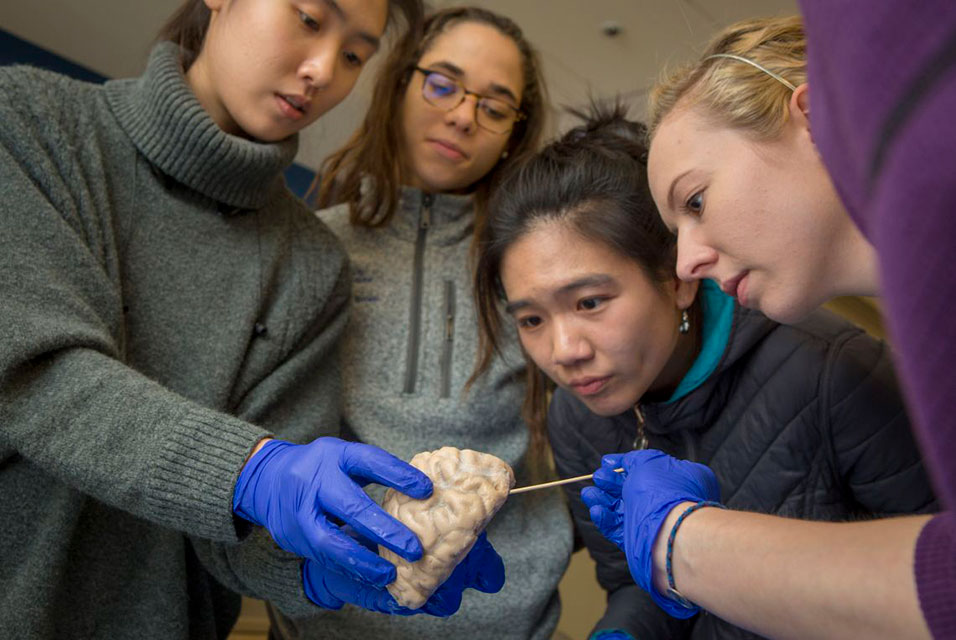ITHACA, NY.- Researchers from Boyce Thompson Institute (BTI) and
Cornell have identified genes that could help plant breeders develop drought-resistant fruit, through a study that provided the first-ever comprehensive picture of how a fruit’s gene expression changes in response to water stress.
Published in the December issue of the journal Plant Physiology, the work was led by the research team of Carmen Catalá, an assistant professor at BTI and a senior research associate in the School of Integrative Plant Science (SIPS) in the College of Agriculture and Life Sciences. Collaborating researchers include Jocelyn Rose, a professor in SIPS, and BTI professors Jim Giovannoni, Zhangjun Fei and Lukas Mueller, who are also adjunct professors in SIPS.
First author is Philippe Nicolas, a postdoctoral researcher in Catalá’s lab.
“We identified a number of genes that are involved in water stress response in the tomato fruit,” Catalá said. “We can now begin to select candidate genes that could help breeders develop fruit that can adapt to drought conditions, and not just tomatoes but also grapes, apples and fleshy fruit in general. That is a long-term potential application of these data.”
The researchers looked at gene expression in tomato leaves and six fruit organs (pericarp, placenta, septum, columella, jelly and seeds) at two different timepoints (growing and ripe fruit) and under four different water stress conditions (none, mild, intermediate and strong).
The researchers found that each of the fruit organ tissues changed in unique ways over time.
“Less than 1% of the expressed genes that were affected by water stress were shared among all six fruit tissues, and more than 50% of the affected genes were specific to a single tissue,” Catalá said.
In contrast to the negative effects of drought, which triggers physiological disorders and fruit loss, some positive effects are associated with drought – at least with mild drought.
For example, the researchers found that water stress increases the amount of lycopene in ripe fruit. Lycopene is an antioxidant that has documented health benefits. Water-stressed fruit also had higher levels of starch biosynthesis, which could yield sweeter tomatoes.
The researchers also found that they could “train” tomatoes to be more resistant to future water droughts.
“When we sowed the seeds from treated plants, we found that the seedlings from stressed tomatoes showed improved recovery from water stress in comparison to seedlings from control tomatoes,” Nicolas said.
Nicolas said they identified several genes whose expression is induced by water stress in mature seeds, which could play important roles in conferring water stress tolerance to the next generation of plants.
The study was challenging in a few ways because the researchers were looking at fruit. Most studies of plant responses to drought stress examine seedling roots and leaves because they are relatively easy to study.
“It is relatively easy to stress seedlings, but if you stress plants too much then they won’t flower and develop fruit,” Catalá said. “Plus, when you want to study fruit, you must grow adult plants, which takes more time, room and overall resources.”
The project was supported by the National Science Foundation and the U.S. Department of Agriculture.










